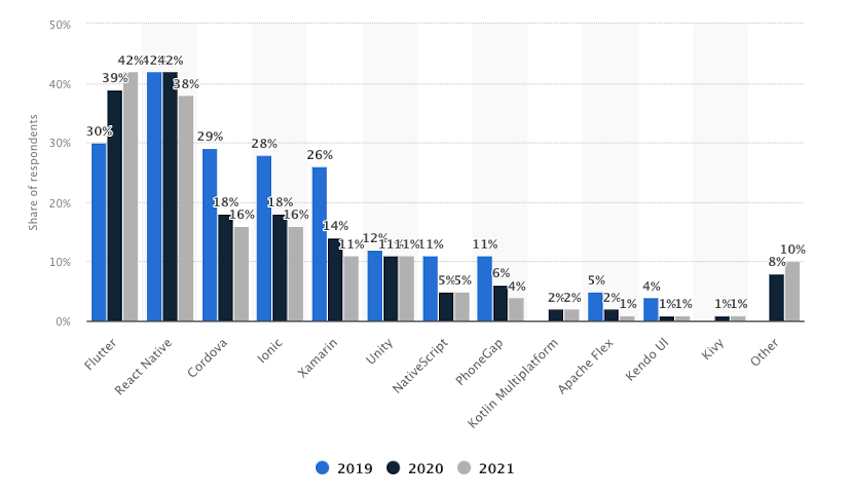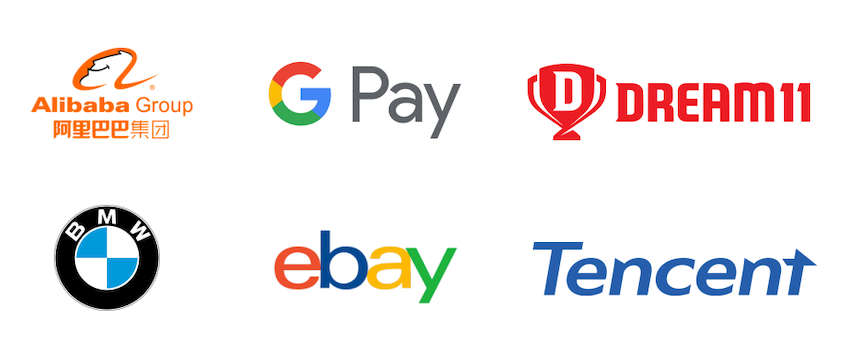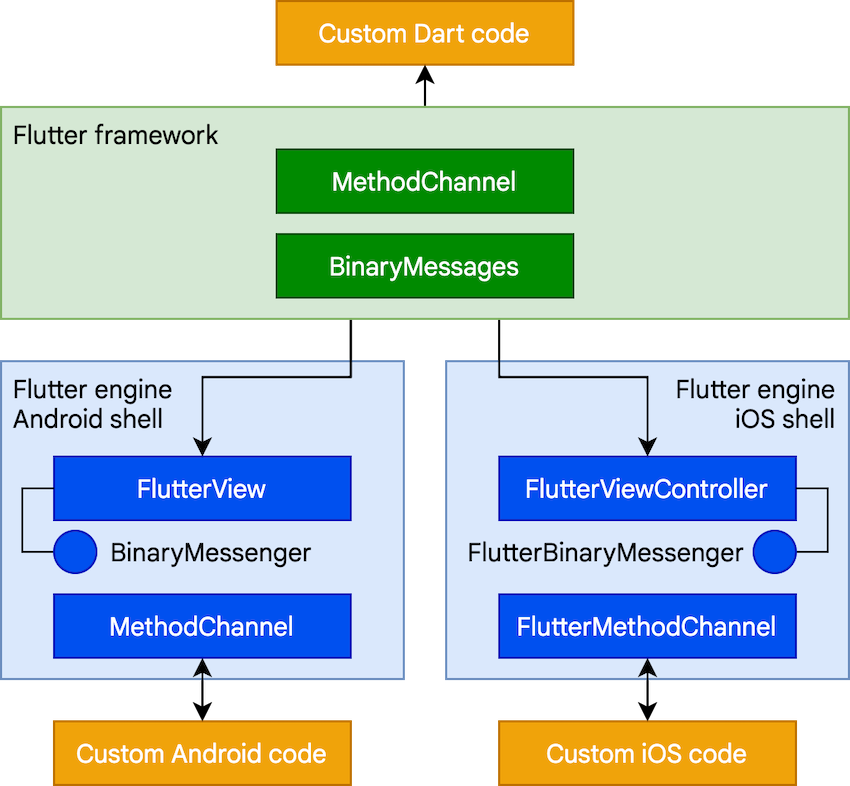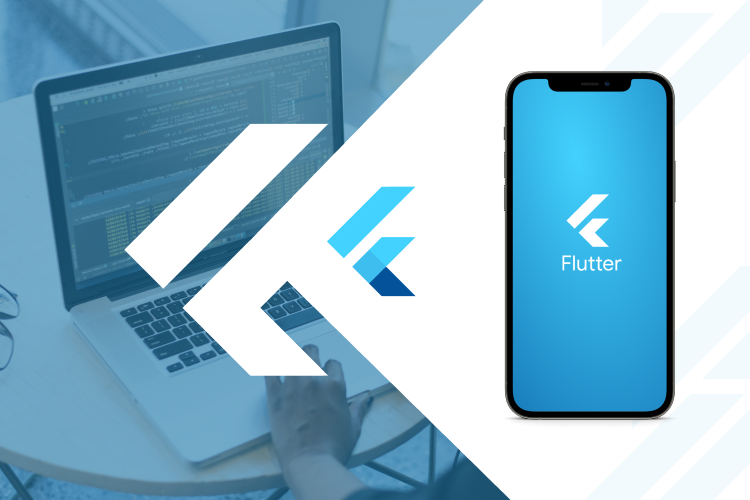Flutter For Enterprise App Development: A CEO’s Guide
- Mobile
- September 6, 2022
Today, businesses of all sizes are transitioning their services to compact, digital mobile app solutions to reach a massive global user base. When speaking of mobile app development, Flutter has been a debatable topic since its foundation with its cross-platform development concept.
To date, Flutter has been widely used for startup and mid-level business app development due to its cost efficiency. But now, it seems like Flutter is all set to rock even in enterprise-grade app development and entering the golden period of ruling the mobile development realm.
The recent Statista survey shows the continuously increasing popularity of Flutter as a cross-platform development framework among mobile app developers – with popularity figures of 30% (2019), 39% (2020), and 42% (2021). If this adoption rate continues to increase, then by 2022, Flutter might cross 50% popularity among app developers.

The statistics also show an intense competition between Flutter and React Native in cross-platform app development. Soon, like React Native, Flutter will also gain more importance for enterprise app development than just being a choice.
Worry not! This blog will solve all your queries! This guide spotlights all facts shouting for the extended application of Flutter for enterprise app development.
As we are on the topic of the extended application of flutter in enterprise IT development, let’s first briefly understand its concept and the reasons behind its popularity among developers.
Flutter Being “Hero” Among Developers
Does Flutter really need any introduction? Definitely not! This Google open-source hybrid app development framework supporting C, C++, and Dart programming languages, has always been a hot discussion topic among developers.
Why? Flutter is Google’s UI toolkit (a bundle of Software Development Kit and customizable Widget UI libraries) for building native-like apps for all platforms, by writing a single codebase for all. Though it supports C, C++, and Dart, most app developers prefer to go with Dart extensively.
So, the question arises, “Why did Flutter choose to go with Dart programming language?” A revised question, “Why do developers prefer to use a dart in flutter app development?”
Dart is an object-oriented and web-based programming language. Nowadays, Dart is replacing Kotlin in mobile app development. The reason? It eliminates the need for XML and JSX – like declarative layout languages. An Ahead of Time functionality of Dart makes it fast to be compiled (thus, known as Just-In-Time Compiler), which eventually boosts Flutter performance with next-level customizable widgets and object-oriented functionality.
As per google’s survey done in 2020, there were around 2 million flutter developers, among which 5,00,000 developers use the Flutter Software Development Kit dedicatedly.
Being a cross platform app development framework, Flutter benefits developers in many ways with:
- Single Codebase: Write code once for all devices (mobile, web, and desktop) with a native feel.
- Widget Tree Structure: An actual tree data structure in code formed by combining many stateless widgets in an easy organizational manner.
- Hot Reloading: Helps developers to frame UI and quickly find and resolve the app code bug.
- Pixel Rendering: Uses pre-built libraries and widget UI kits to ease the pixel rendering implementation and better control pixels on the screen. i.e., 2D rendering engine.
There are other reasons also for developers to pick Flutter over many cross platform app development frameworks.
Also, read about the effectiveness of Flutter in mobile app development and its role in startup app development.
Big Enterprises That Have Used Flutter In Their Massive-Scale Project
Flutter enables businesses with many technical and user-side features and functionalities, including creative animation implementation, cutting-edge app performance, controlling app screen pixels, and much more. Therefore, many businesses and famous brands choose Flutter for their mission-critical application development.

- Google Pay: Online payment transaction and reward collection application that has used Flutter to manage a massive user base.
- Alibaba Group: To develop Xianyu app – a Cloud-based Goods E-commerce platform – used Flutter to ease the app development process.
- BMW: Scaling up their Vehicle Companion App to all global mobile OS users (BMW automobile users).
- eBay Motors: Online car selling and buying platform – used flutter to speed up their software development.
- Dream 11: Online fantasy cricket playing platform developed in Flutter that supports over 50 million fantasy sports users in India.
- Tencent: Used Flutter to provide front-end support to its several underdevelopment app projects to improve development efficiency, increase app parity generation, and boost developer experience.
- Abbey Road Studio – Reinvented the songwriting process with Flutter
- Beike – Online housing solutions – solved over 300 million family housing problems
- ByteDance – Chinese internet technology platform that has increased by 33% app development productivity and reduced by 5% app development package size.
- CrowdSource – Google AI and ML training app providing users a gamified experience. With Flutter, this app has increased the total addressable market by 23%, reduced code size by 50%, and boosted development speed by 100%.
- Hamilton – An American musical app that allows its audience to experience music beyond the theater.
There are other big software projects as well, developed using Flutter, including Toyota, iRobot, 4 Pics 1 Word, Nubank, Patch Me: Eye Patch Tracking, Push, QuintoAndar, Reflectly, Rive, Robert Felker: Generative Art, Stadia, Supernova, Wallace & Gromit AR, etc.
Why Use Flutter For Enterprise App Development?
Okay, Knowledge Alert ⚠️! Do enterprise applications belong only to large-scale businesses? Absolutely not!
Enterprise applications are for all sizes of businesses – progressive startups, medium-scale businesses, and large-scale enterprises, built for a massive user base but by considering specific applications and extensive cybersecurity.
With enterprise apps, admins have full control over managing data centrally, initiating organization process-wide automation, and enforcing an event-driven approach when required.
Flutter has more than 4000 libraries and big support from the open source community, which makes it the best fit for massive-scale enterprise app development.
To give more emphasis on Flutter enterprise software development, let’s understand the enterprise mobile app development requirements that Flutter fulfills and becomes a lucrative option.
1. Layered Architecture for Proven Efficiency
An enterprise app follows a layered architecture of interconnected layers for better presentation layer, service layer, business logic layer, and data access layer implementation.

In this layered architecture, developers need to ensure the following requirements:
- Accessibility to well-documented app design and development requirements
- Enterprise-wide cognitive team communication and collaboration
- Easy to understand documentation of validated codebase
- Better navigational and understandable app features
With these development requirements, Flutter helps developers by providing secure networking to web resources, storage systems (local + SQL database), and library plugins for better accessibility to hardware in the following ways:
- Easy State Management: It lies at the heart of Flutter as it collaborates with open-source tools, like Provider Framework and libraries, including BLoC, Redux, setState, etc., for state management. And RxDart is the right choice for the Flutter and State Management tool integration and meeting asynchronous programming needs.
- Code Independency: To make your code independent for different native platform processing, there’s a need for dependency injection. In Flutter, it can be done smoothly using GetIT Locator – a DI library working closely with the state management framework to ensure app code layer separation.
- JSON Serialization and Deserialization for better RESTful client and enterprise app performance and user experience.
- SQLite to store and process large structured databases.
- Flutter offers limited local storage to store keys and values to make the enterprise app work even when it has stopped processing foreign databases.
- Push Notifications: Enterprise apps need backend integration to remind client-side apps about services and latest updates, which can be implemented by using Firebase Messaging and Uni Links (for proper navigation and push notifications to launch specific apps’ areas) – like Flutter libraries.
2. Development Environment For Native Apps – Android & iOS
When it comes to ensuring a Native App-like experience in the cross-platform, Flutter offers great agility to integrate with Android Studio, IntelliJ, and Visual Studio Code. These IDEs support all available computation devices type, but to extensively meet the iOS build requirement, MAC with Xcode is preferable.
Apart from that, Flutter provides developers with an extensive set of libraries to smoothen the app development and maintenance parts.
Let’s see how:
- Better Scalability: Flutter has a Dart ecosystem, allowing apps to scale smoothly. In that, all you need to do is import Dart Packages (with Extended Libraries) to extend the Flutter app’s supportability and functionalities. The Dart Packages even makes it possible to re-factor applications to transit them into another platform, like the cloud.
- Proven Testability: Flutter widgets are compatible with all three necessary app tests – Unit tests, Widget Tests, and Integration Tests – with wider test coverages.
- CI/CD Support: Flutter – a cross-platform app development tool – can use Native Android and iOS toolsets with enterprise CI/CD setup to smoothly deploy mobile apps on Google Play Store and Apple App Store.

3. User Interface
User interface plays a vital role in making your app successful – after deciding Flutter app architecture. For that, Flutter supports functionalities of Cupertino Widgets for iOS and Material Widgets for Android operating systems.
To make your enterprise app user attentive, you can integrate the below-mentioned design features using Flutter:
- Animation: UI/UX designers can use Flare – a full-fledged 2D vector animation library of Flutter to show animations.
- Infinite Scrolling: Today, you can find infinite scrolling in many applications, such as Facebook, Instagram, and Twitter, to explore content on every scroll up. And you can achieve such using Flutter, too. For that, you can use the
ListViewwidget to achieve scrollable functionality and 2 libraries –EndlessPaginationListViewandEndlessPaginationGridViewfor infinite pagination as per your page and scroll view requirements.
- Page Transition: The requirement for the page transition changes as per action and requirements. But you can use this
page_transitionpackage as a library to achieve your need for transitions.
Not just these, with today’s extensive Flutter library base and open source dev community, it has evolved a lot. With that, it is now possible to achieve image caching for faster loading, app responsiveness, neuromorphic view, calendar view, timelines, and much more. All you need to do is use their custom packages as library codes.
4. Hardware Requirements For Faster Processing
No matter how feature-rich your application is, at last, it has to run on your hardware – mobile device. Hence, a feature-rich app without proper hardware optimization is of no use. And in the marketplace, you won’t find any app that works seamlessly without hardware optimization.
Here, hardware optimization – in terms of mobile applications accessing device hardware to perform hardware-specific tasks. Let’s say, for example – you’re using Amazon – a shopping app – it will ask for permission to access your microphone, storage, speakers, location, etc., to provide you the best-in-class user experience.
The device hardware access permissions changes as per the application and use cases, but below are the common hardware access a normal mobile app can have, which can be achieved with Flutter:
- Location
- Camera
- Contacts
- Biometric authentication
- Storage: Files and Media
- Speaker and Microphone
- Accelerometer
- Gyroscope
5. Top-Notch Flutter Mobile App Security
Nowadays, data is the prime key to unlocking the door to a particular realm. And you don’t want to lose it in the hands of a person with malicious intentions.
Compliances
Seeing the importance of digital users’ intellectual property, all global sectors and governments have created internet regulatory bodies that have necessitated for app developers to comply with internet cybersecurity norms. i.e., HIPAA and HITECH for Healthcare enterprise apps, PCI-DSS for FinTech apps, ISO standards for Manufacturing services providing apps, etc.
The internet security regulatory bodies also change with continents and countries. Hence, while developing any industry-specific enterprise application, you need to check and comply with concerning regulatory requirements.
Cybersecure Your Flutter Enterprise App With Authentication
Also, you don’t want to lose your loyal app users’ interest in your application due to weak cybersecurity implementation. For enterprise app development, you need to consider various factors, including protection from SQL injection, data encryption, data validation before making amendments, access control, logging, intrusion detection, etc.
Thanks to Flutter’s friendliness and inheritance to native Android and iOS sandbox environments, it is now possible to secure your enterprise app. Also, Flutter’s Simple Auth helps you safeguard app access authentication by hardening biometrics, pin, and password accesses.
Popular applications with such authentication to its users are Google, Amazon, GitHub, Facebook, Instagram, Dropbox, etc.
Secure Flutter App with SSL Pinning
Securing your enterprise app by installing an SSL certificate also helps to provide entry-level security coming from the web. It will also benefit you to showcase your web version of the Flutter enterprise app as a credible source.
Other Flutter App Security Methods
- Code Obfuscation to hide API keys in your Dart Code and provide your Flutter app security from app code reverse engineering done by a third-party person with malicious intents.
- Use the Flutter_Secure_Storage plugin to secure your Flutter app storage.
- Flutter uses the RootBear plugin to protect your app optimized for Android devices from Jailbreaking and DTTJailBreakDetection for apps optimized for an iOS device to limit users to jailbreak app settings done by developers.
Other Enterprise App Development Requirements That Flutter Meet
Apart from the above-mentioned enterprise app development requirements, your Flutter enterprise app can be bundled with the below-mentioned requirements:
- Flutter has libraries to integrate and support Adobe and Firebase Analytics tools.
- Flutter has
Sentry Libraryto implement app error reporting for faster and easy code debugging. - With Flutter, developers have access to several custom libraries and third-party build libraries to make your enterprise app a full-fledged one.
- Using Flutter, you can even build your enterprise app for the advanced-level of functioning by implementing QR code generating and scanning functionality.
- Using custom Flutter libraries, you can even implement:
- In-app sharing and cross-app sharing with user accounts
- Create and manage a personal contact list.
- Sending Text and Multimedia Messages
- Receiving OTP SMSs
- Integrate in-app payment functionality using Square in-app payment SDK.
Flutter Going Beyond iOS and Android Support
Till now, in this blog, we only talked about Flutter helping to build cross-platform apps that run like native Android and iOS mobile apps. But now, with growing community support and libraries, Flutter is extending its cross-platform development nature to even Web, Windows, MacOS and Linux platforms. One app code file to be able to compile to run on all available OS platforms is what developers and businesses need for time and cost investment efficiency.
As a leading Flutter app development company, here we are sharing the reasons that make Flutter a beneficial choice for cross-platform development:
- Faster code development with access to countless custom packages that can be used as libraries in Dart Code, leading to faster app time-to-market.
- The same code and app UI logic for all sizes of mobile devices and operating systems
- Better and close-resemblance of native apps
- Flutter is using its own high-performance rendering engine named Skia (built in C++) to draw 2D widgets.
- Builds well-hardened apps with near to zero business risk exposures.
At last, we’d say that the Open Source Flutter developers’ community is working fanatically to add up more custom Flutter packages and libraries to extend its cross-platform development support.
How Will MindInventory Help You in Enterprise App Development Using Flutter?
The adoption of Flutter in enterprise-grade development is becoming a buzzword across the mobile app development realm. Through this, Flutter will not only provide them with a cost-efficient solution but also leverage them to rollout their digital service innovation with full thrust.
Flutter is the most feasible solution for all sizes of businesses to develop mission-critical apps for all platforms in a single investment. And MindInventory is the best choice to build your dream enterprise app under a friendly budget. Hire a talented team of Flutter app developers from MindInventory today!

FAQs On Flutter Enterprise App Development
Flutter is an open-source, cross-platform mobile app development framework with a vast Google open-dev community to build feature-rich apps for both – Android and iOS platforms in just one code. The countless custom libraries in Flutter help to develop enterprise apps with beautiful animations, transitions, higher performance, high responsiveness, etc.
If we consider certain Flutter enterprise app development standards the development cost varies through factors, including code optimization standards, the complexity of features (such as navigation, chat, payment integration, etc.), location of developers, development model, etc. Contact us for further Flutter-based Enterprise App Development cost inquiries!
Flutter is still a growing development platform and has extensive support from the Google open-source community. Also, in Flutter, developers only need to code once to develop a cross-platform app with a near-native-like working experience. And this is taking developers’ and businesses’ interests extensively. Hence, we could say that Flutter has a bright future in mobile app development for all build-scale requirements.













